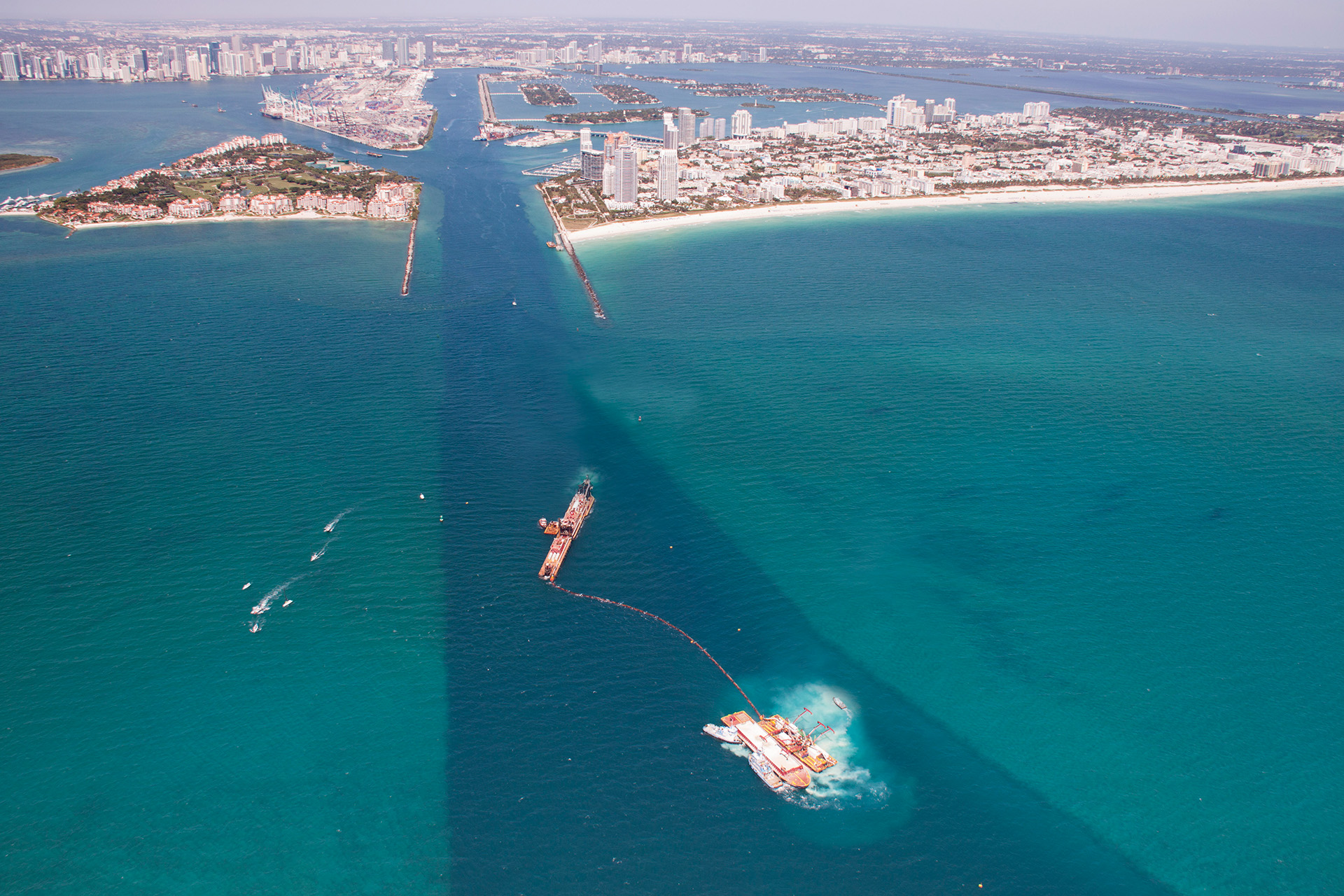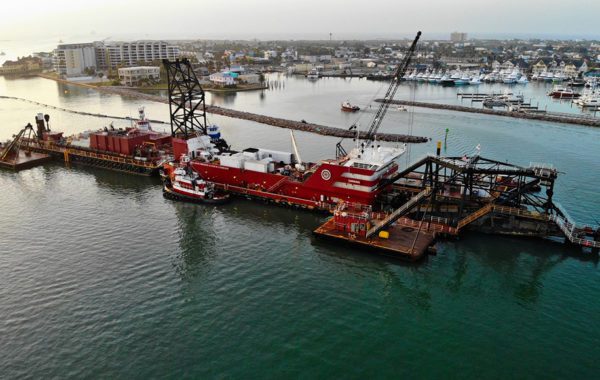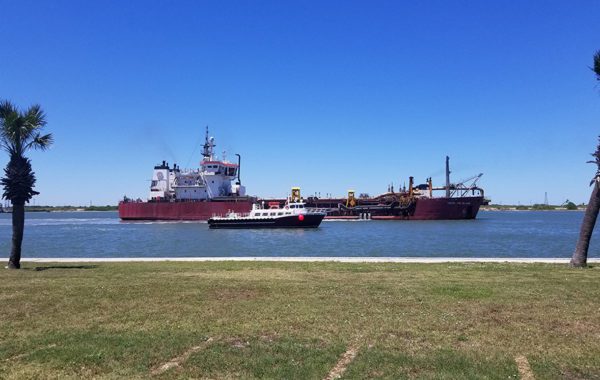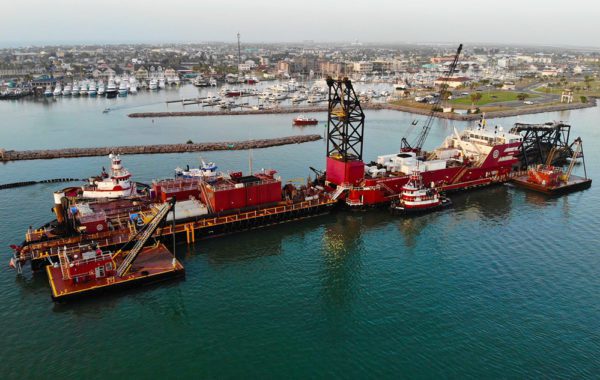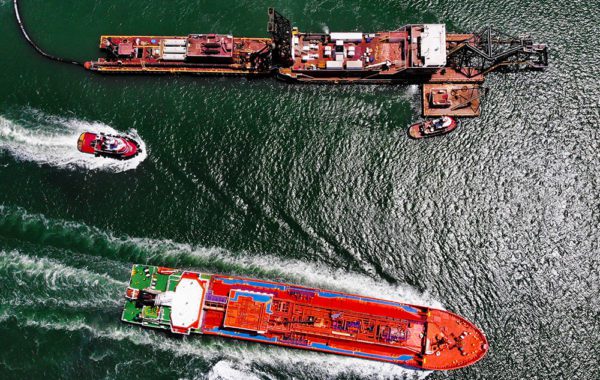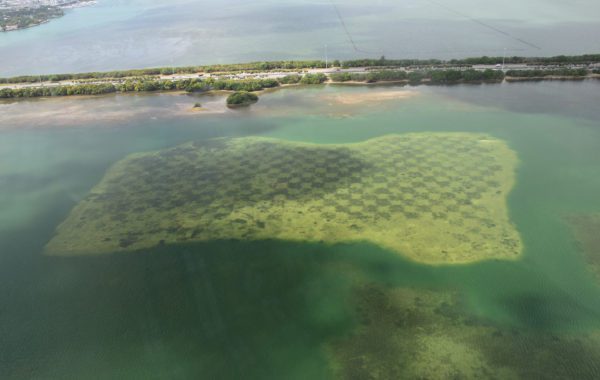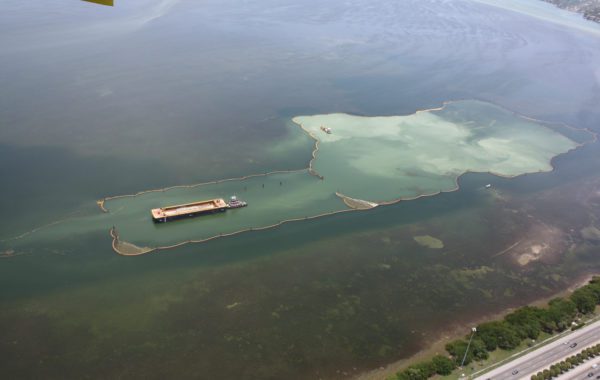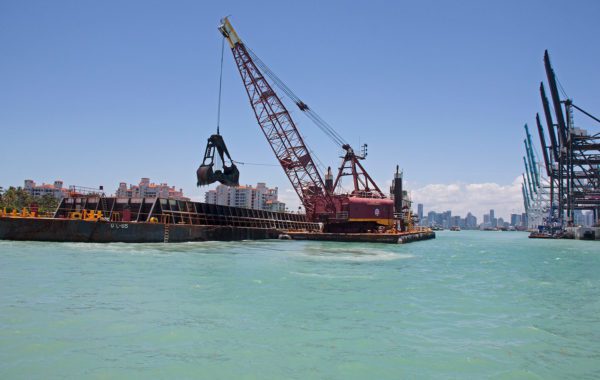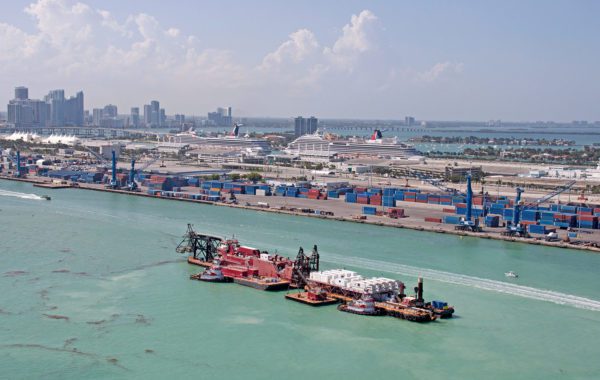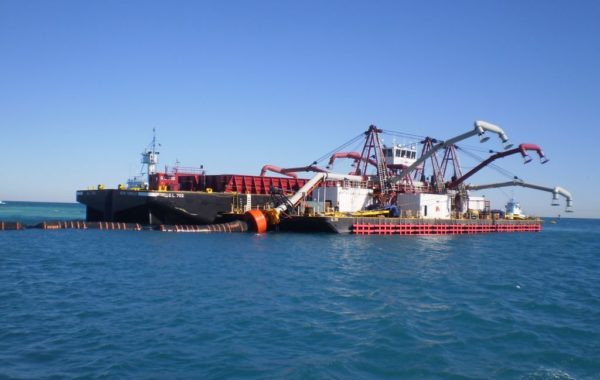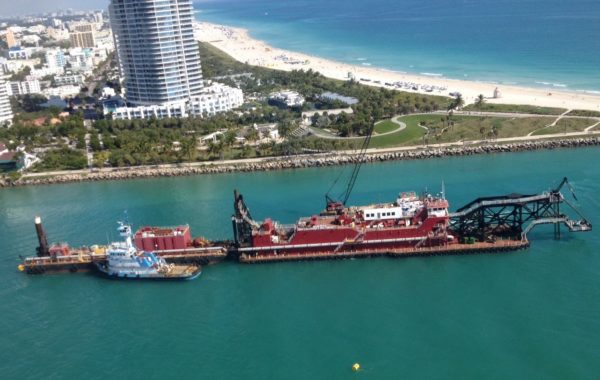CHANNEL DEEPENING AND PORT EXPANSION PROJECTS
Miami Entrance Channel Deepening Dredging Project
The Miami Entrance Channel Deepening project brought the harbor to a depth of -50 and -52 feet to accommodate larger class vessels, a major step towards the United States entering into the post-Panamax era of shipping commerce.
GLDD was well suited for this project, not only by virtue of the scale and versatility of its dredging fleet, but also due to the challenges posed by dredging hard limestone materials while conducting operations in accordance with important and sensitive environmental considerations.
GLDD deployed six of its specialty vessels to construct the work in the most economical and environmentally sensitive manner possible. The cutter suction dredge Texas performed the majority of the work. The dredging area’s sand and limestone seabed required the powerful cutting capacity of the dredge Texas to successfully conduct these operations because the limestone is very hard and the rock formation was massive and solid.
GLDD worked with partners on an environmental mitigation and monitoring plan to minimize the impact of the dredging work on the area’s fragile marine ecosystem. As part of the work, two areas of artificial reef were constructed totaling 11.6 acres. Divers relocated over 1,000 corals from the channel dredge area to these newly constructed reefs.
Construction of a seagrass mitigation area was also a part of the project. The “Julia Tuttle hole” was dredged in 1958-59 as fill material for creation of the Julia Tuttle Causeway connecting Miami and Miami Beach. Dredged sand and limestone were used to fill 17.1 acres of this former dredge borrow pit hole to an elevation of -6 ft. The area was then capped with 2 feet of select fill for seagrass to be planted. Over 118,000 seagrass plants were transplanted into the capped area.

